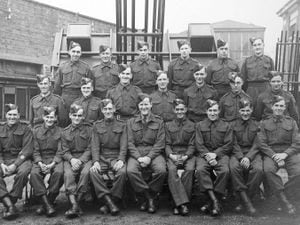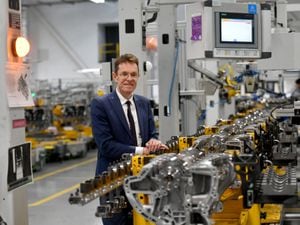The power of learning: How university expansion is helping transform Wolverhampton
You don’t have to go far in the city centre without seeing the words ‘University of Wolverhampton’ emblazoned across one grand building or another.
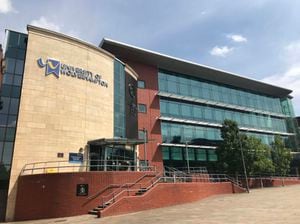
The scale of its growth over the last decade has been remarkable and crucial to a city centre attempting to adapt to changing times.
The intervention of the university in the future of Wolverhampton’s iconic Beatties building shows the power it has to make a difference. It has the need, the will and the resources to develop its profile in the city centre and to continue the growth of the Black Country as a seat of learning.
The university revealed this week that it wants to buy the Beatties building.
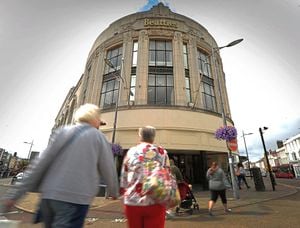
The move won’t save the ailing department store, which has been a much-loved fixture for many generations. But it gives hope that the eventual closure when it comes won’t simply act like a falling house of cards, with a ripple effect damaging the whole city centre.
The decline of the high street has seen more and more shops left empty, with the Mander Centre currently struggling to hold onto its anchor Debenhams store.
Positive future?
But the future for Wolverhampton looks far from hopeless. While the retail sector remains a tough riddle to solve there is much going on.
The huge £50 Westside development is in the pipeline, main city centre streets are set to be pedestrianised to create a more open and inviting area, while glimpses of an impressive rebuild of the train station, to be linked to the metro system, can already be seen.
And the university has been a key player in helping to attract such investment by ploughing millions of pounds into the city itself.
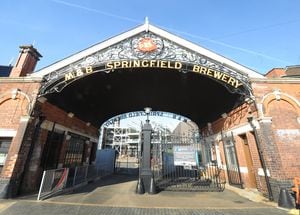
The evidence is all around. The impressive Rosalind Franklin building on Stafford Street has helped transform the entrance to the city centre from the north, which was once ageing and uninviting.
The Lord Swraj Paul business centre has also sprung up next to Molineux in recent years.
That’s without even mentioning the two main campus buildings, which include the Wulfruna building.
More coverage:
And by being willing to spend, the university has been able to breathe new life into derelict and run-down eyesores. It’s almost as if leaders have waved a magic wand to replace abandoned, forgotten sites, with fresh, modern facilities.
One of these sites is the Springfield Brewery, where a £100m School of Architecture is taking shape.
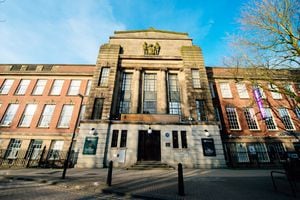
The university was also keen to invest at a time of huge uncertainty in the UK following the economic crash which led to a recession, continuing to spend when others were reluctant to do so.
'University city'
Vice-chancellor Geoff Layer describes Wolverhampton as a “university city” and that is now certainly the case after years of expansion.
As well as bolstering education prospects of young people there are other benefits for the city. Residential developers are suddenly attracted to a site which was once wasteland but suddenly presents an opportunity to build luxury apartments or shops.
The university has also looked beyond the city. It has campuses in Walsall and Telford, with another on the way in the Shropshire town, and a new cyber research centre in Hereford is planned. It has been able to do this while living within its means, operating with barely any debt.
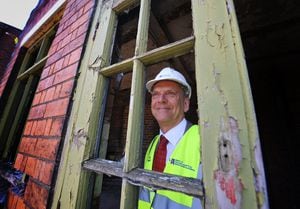
Now, in a further sign of its might and expanding influence, the university has set its sights on Beatties.
Much of what the university has done in the last decade has been achieved through meticulous planning but leaders were forced to put together a plan for Beatties quickly.
Officials acted fast after it emerged the famous old building was on the market for £3m, which would be a relatively small outlay considering it sold for £47m in 2006 and £69m a year earlier.
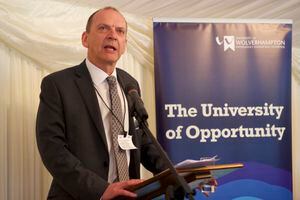
The short process meant there has only been a few weeks between the site going on the market and the deadline for bids. University leaders have been able to demonstrate they have a vision for the future of Beatties, and now wait to see if their bid will be successful.
Whether it is or not, the fact it has been bold enough to make a move for the huge, historic building shows the influence the university now has in the city and the position it views itself in acting to preserve one of Wolverhampton’s gems for a new age.
Bosses have been keen to strike a balance between retaining an element of retail in their vision for Beatties and creating a new university building to add to their ever-growing portfolio.
'Iconic building'
Vice-chancellor Professor Layer said on announcing the proposal: “Wolverhampton is very much a university city and we want, alongside our other civic partners, to ensure that it remains a vibrant and viable place for people to study, work and live.
"This iconic building lies at the heart of the city and it would be our intention to use the space creatively, working with our staff and students as well as external partners and local stakeholders to breathe life back into the building and to create a new chapter for Beatties and for the university.
“We have invested significantly in the city and this is the next step to assist in long term regeneration as well as further demonstrating our commitment to the city, the university and securing our place as the leading higher education provider in the region.”
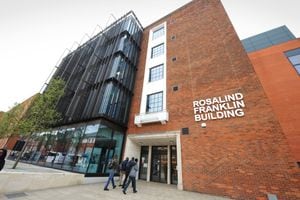
Pat McFadden, MP for Wolverhampton South East, said he was proud of the ambitions of a university.
He said its very obvious presence in Wolverhampton and other towns like Walsall and Telford was a sign of its confidence in the future, and that bodes well for the region as a whole.
He said: “The university is an incredible asset for the city.
“Obviously its main job is providing top-quality education but it’s also been an important investor in Wolverhampton and a driving force for regeneration in the city.”
Council backs Beatties bid
The city council has also given its approval to the university’s plan to transform Beatties.
Economy boss Councillor Harman Banger said: “We wholeheartedly support the acquisition proposal put forward by the University of Wolverhampton.
“This is entirely compatible with the council’s regeneration vision for the city centre and investment commitment. We stand ready to work with the university to make this vision a reality.”
Corin Crane, the chief executive of the Black Country Chamber of Commerce, said the impact of the university’s growth has been wide-ranging.
He said: “I have worked in cities across the country and we are incredibly lucky to have such an ambitious university in the heart of Wolverhampton and the Black Country.
“They have invested in a locally-focused way, at the Springfield Brewery site, the Science Park and business school and now Beatties. It just shows what an integral part of the city they are.
“Any site regeneration work taking place gives confidence to investors. When businesses look to locate in areas the relationship with the university is absolutely essential.”


